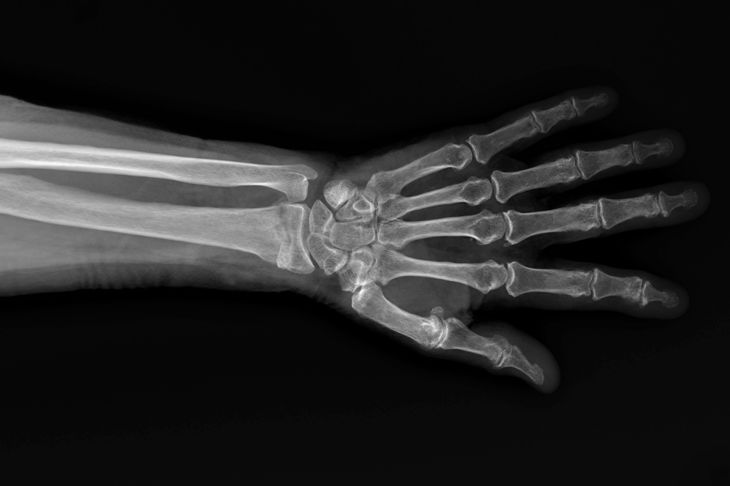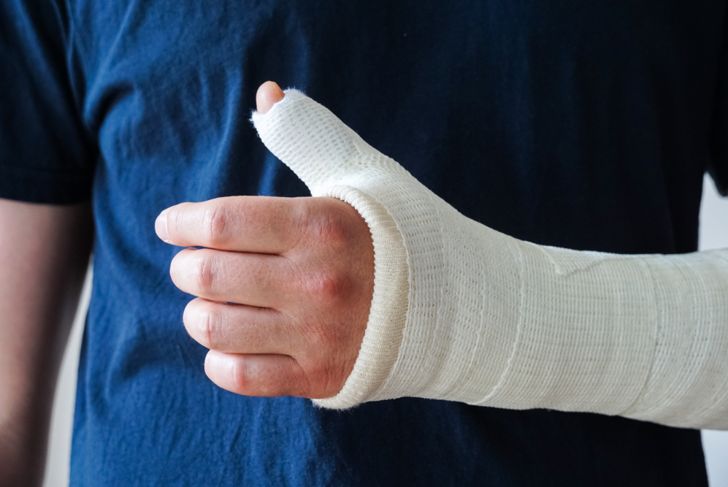The Colles fracture is one of the most common breaks involving the hand and wrist. If you have an injury to your wrist, it’s important to know the signs of this fracture and seek medical attention as soon as possible.
What is a Colles Fracture?
A Colles fracture is a break to the distal part of the radius bone. There are two bones in the forearm and the radius runs along the outside of the forearms while the ulna is toward the inside. Of the two bones, the radius is at greater risk of fracturing or breaking, despite being the thicker of the two bones.
Causes of Colles Fracture
The most common way a Colles fracture occurs is from falling onto an outstretched arm with the wrist in extension (like a “stop” gesture). The force of the radius striking the ground creates the force that causes the bone to break. If the underlying bones are weak due to bone loss or osteoporosis, the risk of a fracture is higher.
Risk Factors
Colles fractures can affect people of any age. Activities that increase the risk of falling onto an outstretched arm increase the risk of this type of fracture. In younger adults, it is linked with falls while roller skating or ice skating. In older adults, a poor balance may lead to a fall that causes a Colles fracture. The risk is higher in older adults that have weak bones due to osteoporosis. Thin, older adults with less muscle mass are also at greater risk since muscle protects the underlying bone from trauma. Colles fractures are more common in women than in men.
Symptoms of a Colles Fracture
Common symptoms of a Colles fracture include tenderness and swelling at the site of the fracture. The area may be discolored due to bruising, and the wrist may look deformed or appear to be out of alignment. If the fracture affects the nerves, there may be numbness or loss of feeling in the wrist or hand. If the blood vessels are affected, the area may look pale. Blood vessel and nerve involvement make the injury more serious, and it will require immediate medical care.
Diagnosis of a Colles Fracture
Healthcare providers make the diagnosis based on a physical exam and x-ray findings. An exam that reveals pain along the outside of the wrist raises suspicions of a Colles fracture. An x-ray that features several views at different angles is more likely to reveal the fracture. Sometimes the bone is broken and angled in a way that leads to a “dinner fork deformity” that shows up on an x-ray.
Treatment of a Colles Fracture
The most common treatment for a Colles fracture is a splint to prevent movement of the hand and wrist. However, some Colles fractures require a cast instead. If the bone is displaced enough to make healing difficult, a doctor may manually manipulate the bone back into place non-surgically, a process called a closed reduction. If the bone is significantly displaced, surgery may be the best option for optimal healing.
Home Therapy
Although immobilizing the wrist and hand is most important for proper healing, doctors recommend other home therapies as well. Elevating the hand and applying ice to the area will help with pain and swelling. A healthcare provider may offer medications for pain relief. Common ones are anti-inflammatory medications (NSAIDs), although they may prescribe more powerful ones if the pain is severe. It’s important that the patient be able to move their fingers again within 24 hours of the cast placement. If this doesn’t happen, notify a doctor.
Prognosis and Outlook for Colles Fracture
The cast may come off in as little as six weeks, but full healing may require up to a year. The injured person will likely be able to do light physical activity after a month or two, but intense physical activity may be off the table for a few more months after that. It’s important to follow the healthcare provider’s instructions to ensure optimal healing and reduce the risk of complications.
Complications
As with most fractures, there can be complications. Most Colles fractures heal, but there’s a small risk of malalignment of the bones. Damage to the nerves that control the hand and wrist can lead to numbness and tingling. Also, a small number of people develop carpal tunnel syndrome after a Colles fracture. Some people have ongoing pain and stiffness in the wrist and hand. If the joint is damaged, arthritis could set into the joint. Early treatment reduces the risk of complications.
Prevention of Colles Fracture
One way to lower the risk of a Colles fracture is to maintain healthy bones and exercise. Diet and nutrition to support bone health and prevent weakened bones due to osteoporosis help as well. Exercise, including strength training, builds thicker muscles that protect the underlying bone against injury. Exercise may also improve balance and reduce the risk of falls.

 Home
Home Health
Health Diet & Nutrition
Diet & Nutrition Living Well
Living Well More
More




















